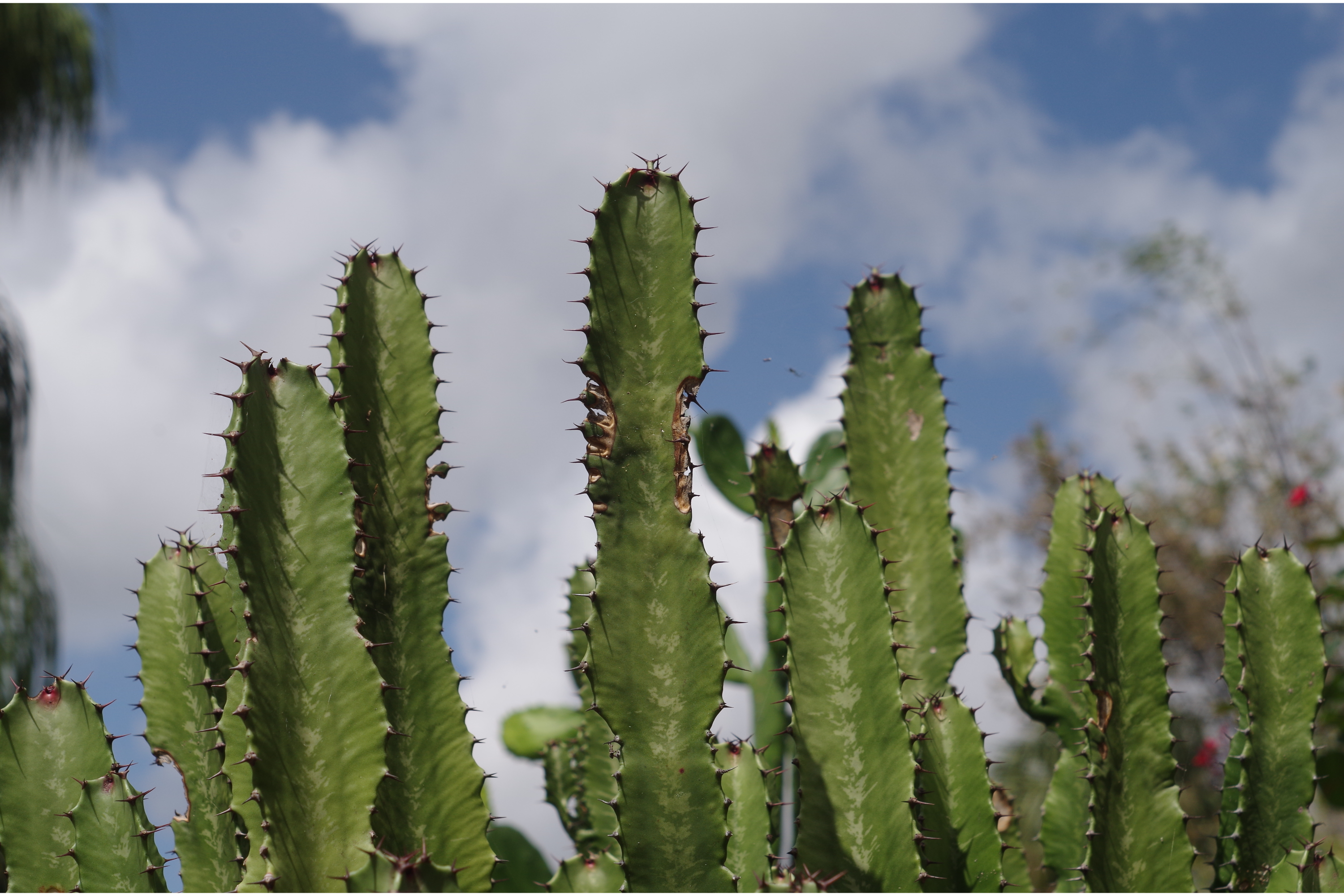Desert candle
(Euphorbia abyssinica)

Description
Euphorbia abyssinica, commonly known as the desert candle or candelabra spurge, is a species of plant in the family Euphorbiaceae.E. abyssinica is endemic to Ethiopia, Somalia, Sudan and Eritrea. It was first described in 1791, by the German botanist Johann Friedrich Gmelin. In its native habitat, it can grow up to 10 m (33 ft) tall. The woody stem is used for firewood and as timber in roofing, furniture and other items, and the sap is used in traditional medicine. It is also cultivated as an ornamental house plant. E. abyssinica is a large, succulent, erect tree-like plant growing to a height of about 9–10 m (30–33 ft). It can grow singly or form candelabra-like clumps. The main stem becomes woody as it ages, and sends out green side branches; these have between five and eight ribs or angles and branch at intervals. The terminal branches have three to five ribs, typically four. The ribs of new shoots bear small rounded protuberances, and it is on these that the leaves, flowers and fruit grow. The leaves are small, leathery and oval, and these soon fall in the dry season. The flowers have distinctive yellowish bracts but no petals; the male flowers have a single stamen, and the female flowers a stalked pistil and branched stigmas. The fruits are capsules with three compartments.The plants exude toxic latex-like sap which can cause blindness, and irritation and blistering of the skin.
Taxonomic tree:







